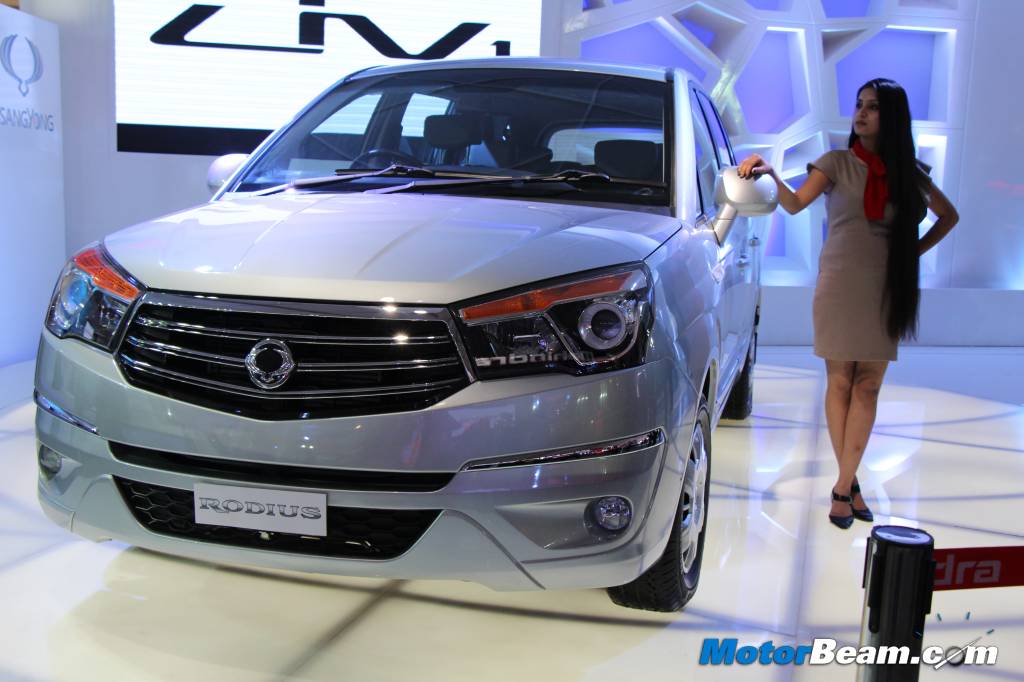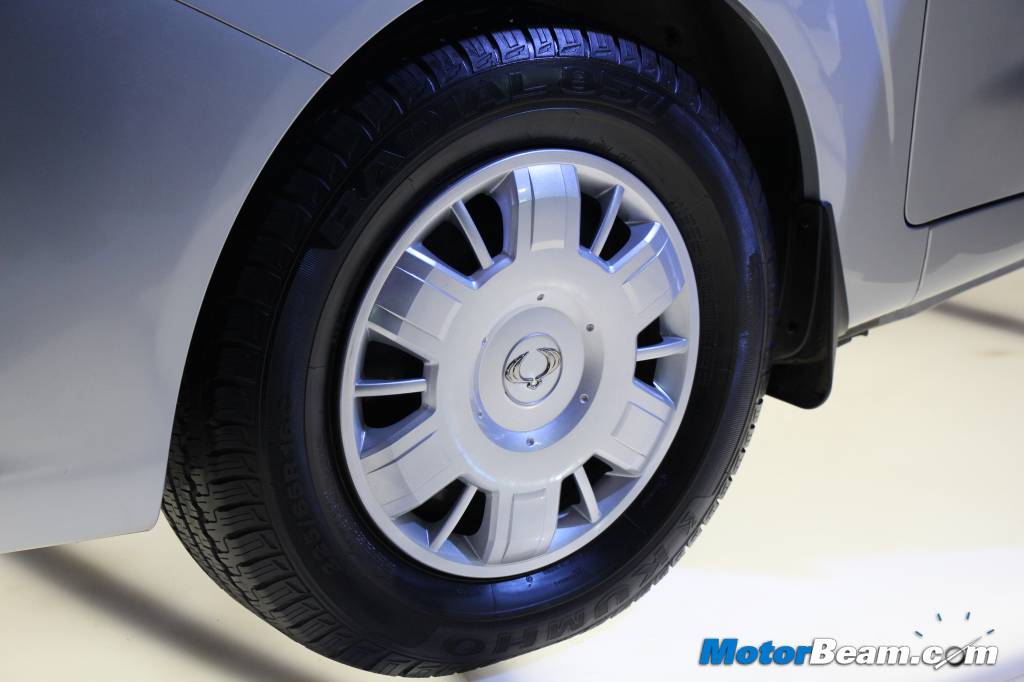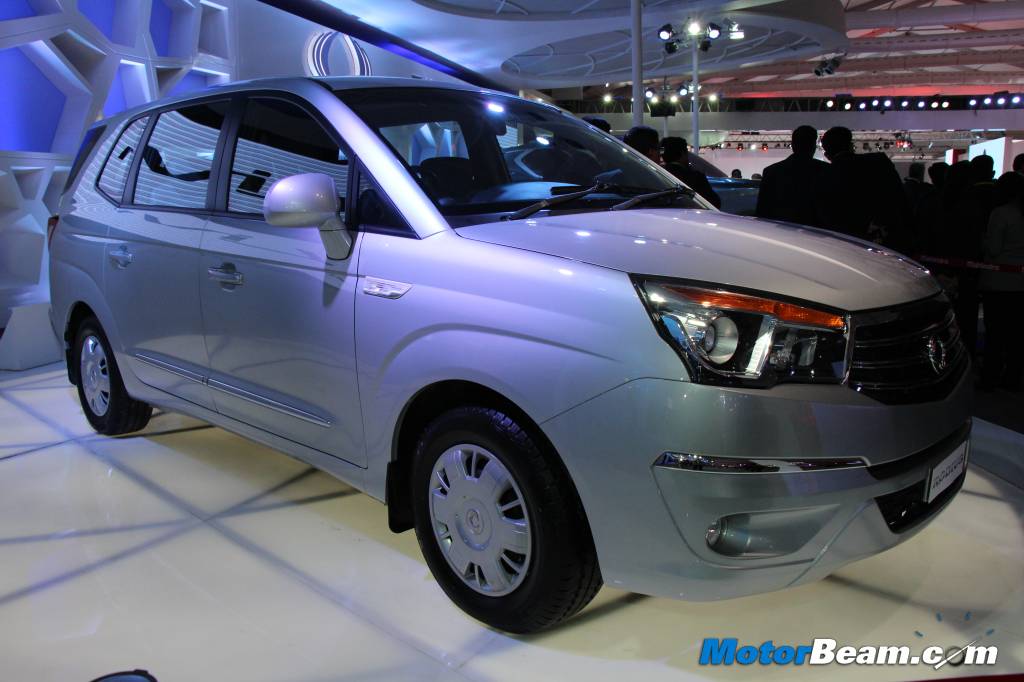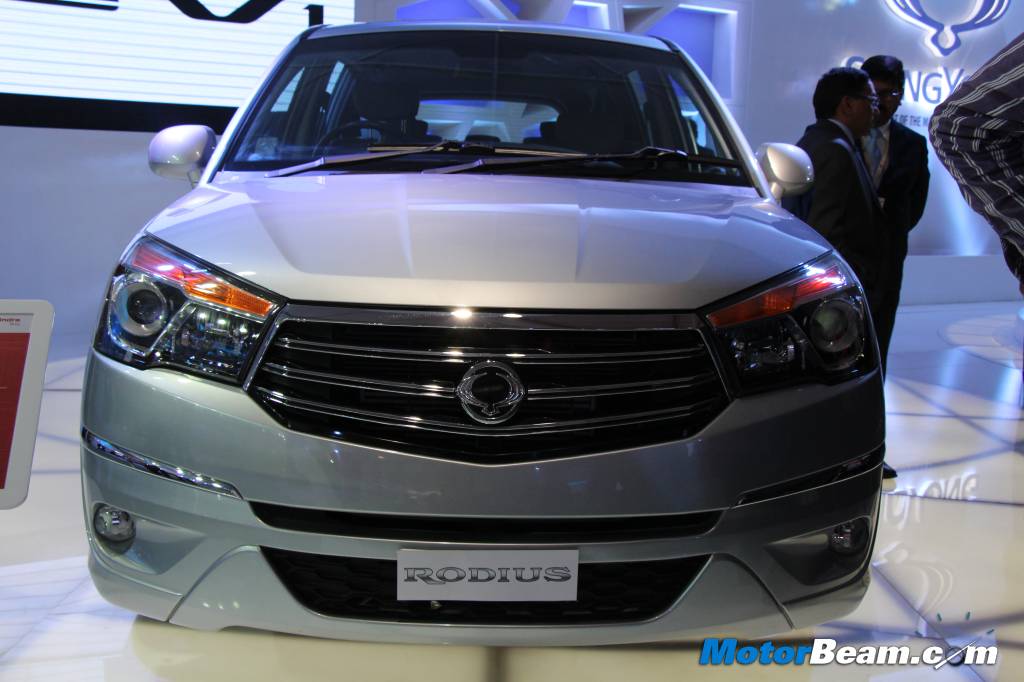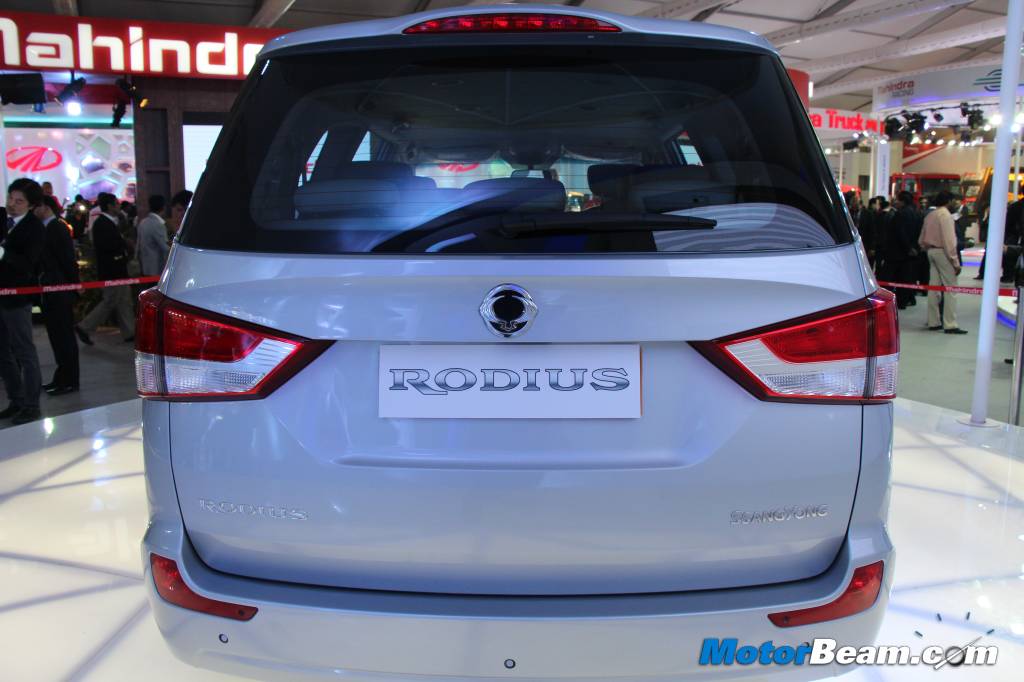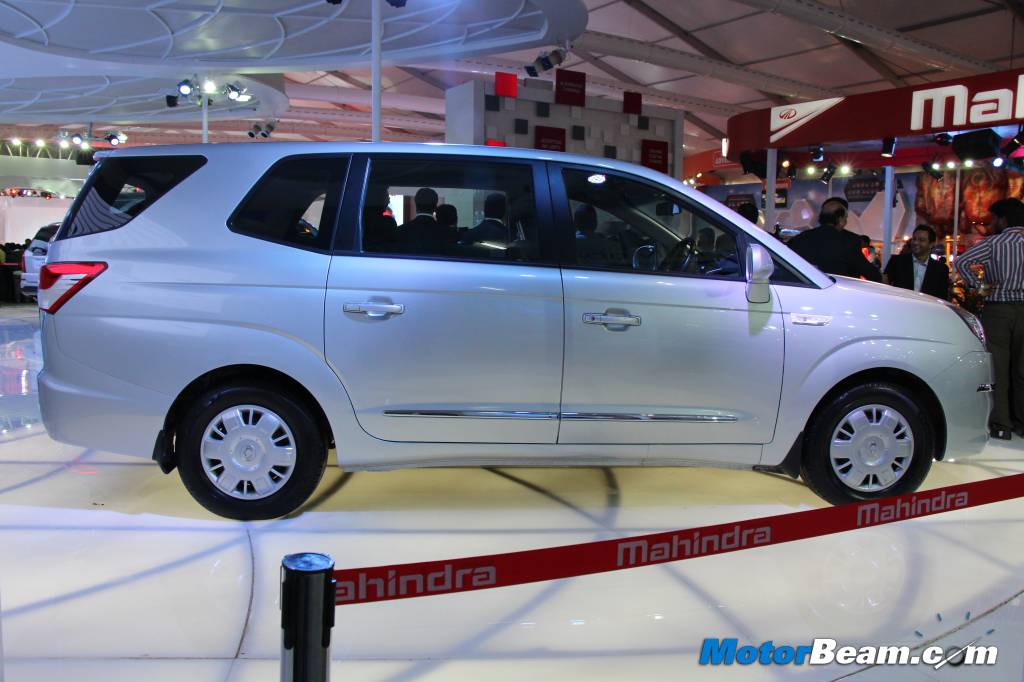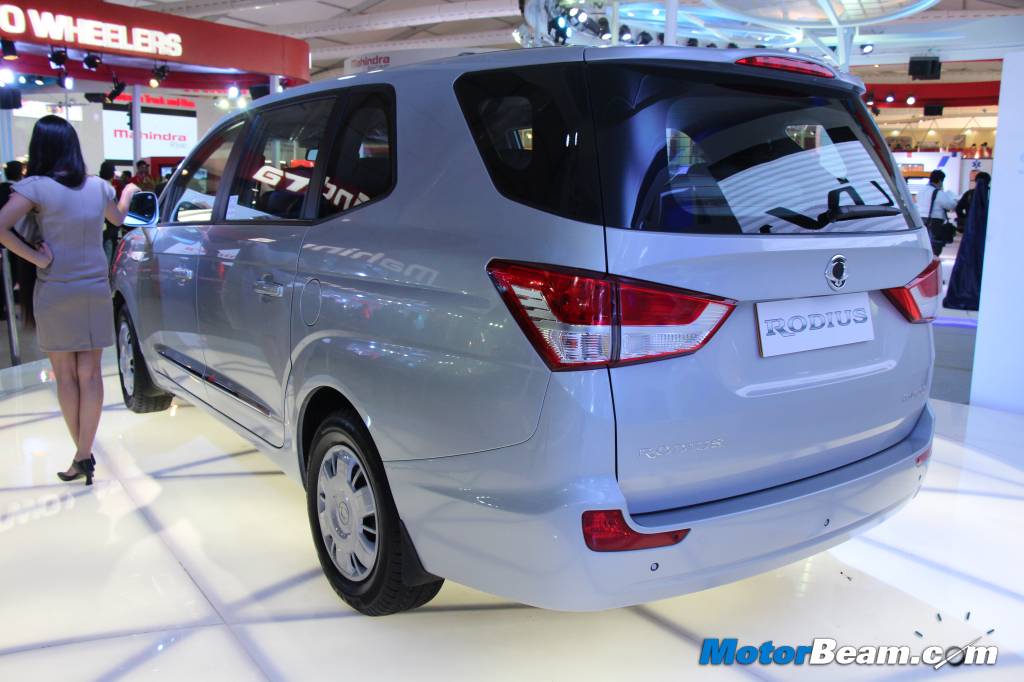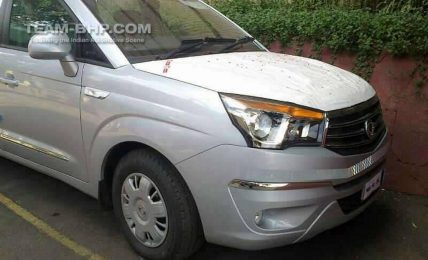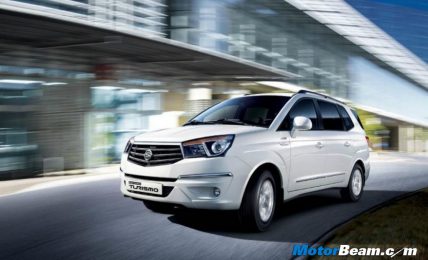The South Korean car maker SsangYong has showcased the soon to be launched all new Rodius (Korando Turismo in other markets) MPV at the 2014 Auto Expo. The Rodius is a 11-seater premium vehicle that first made its public debut in its home country last year. The MPV is currently on sale in European, African, Russian and Chinese markets. Apart from the Rodius and Rexton, SsangYong has also showcased the Limitless Interface Vehicle (LIV-1)Concept at its pavilion.
The Ssangyong MPV has been on sale since over a decade under the Rodius moniker. The last generation Rodius was completely written off for its uninspiring design and Ssangyong chose to give it an image makeover, thus the new generation model bowed in last year with a completely refreshed premium design and better driving capabilities. The Rodius is a result of two and a half years of hard work and an investment of $ 165 million from the Korean manufacturer.
The Rodius is a wholesome vehicle in every sense. It measures a massive 5130 mm in length, 1915 mm in width and 1815 mm in height. The wheelbase is an extensive 3000 mm and has a ground clearance of 170 mm. To give you perspective, the mammoth Ford Endeavour measures 5060 mm in length, 1788 mm in width and 1826 in height. Talk about road presence. The MPV or like Ssangyong calls it APV (All Purpose vehicle) is available in 9, 10 or 11-seat configurations and gets Luxury Touring (LT), Grand Touring (GT) and Royal Touring (RT) variants.
The SsangYong APV gets a refreshed exterior design that looks very premium. The front facia is bold and imposing with the wide three slats chrome grille and a new headlight cluster. The three piece head lamp unit gets projectors as standard. The bonnet is huge with a nicely sculpted nose. Moving to the side profile; the bulk of the MLV does show up; however, the flat shoulder line and a smaller crease line at the bottom do a good job hiding the same. The rear on the other hand looks sharp and very European. The wraparound angular headlamps feel small but do look good. The rear quarter glass blends well with the rear windscreen looking like a single unit. SsangYong has cleverly induced chrome all around the car to give it a premium look, which should work really well in our market.
Step on the inside and there is enough space for a family to thrive in. Frankly, it misses out on a water closet; otherwise it’s no less than a 1 BHK apartment. You get 2+3+3+3 seating options, with the last 3 rows capable of folding down or being removed for added luggage space. The fit, finish and quality are top notch throughout the vehicle. The Rodius features hinged car like doors, making ingress and egress easier for the passengers. The dashboard is well laid out with wide array of controls and a multimedia screen. You also get a multi-functional 4-spoke steering wheel, automatic climate control, cruise control, sunroof, a four channel amp-equipped built-in audio couple with Bluetooth hands-free function with USB/Aux connectivity.
Powering the Rodius APV is Ssangyong’s own 2.0-litre, 4-cylinder turbocharged e-XDi200 diesel engine capable of producing 155 PS of power at 3400-4000 RPM and 360 Nm of torque at 1500-2800 RPM mated to a 6-speed manual and a 5-speed automatic transmission. Internationally the 3.2-litre, V6 petrol unit is also available but won’t be coming to India. The vehicle also gets 4×4 making it appealing to those who want to take it for mild off-roading as well. The safet kit on the other hand comprises of Electronic Stability Program (ESP), Roll over Protection (ARP), Brake Assist System (BAS) along with airbags and ABS.
The Rodius makes sense for our market, considering our love for big vehicles, which are also practical. SsangYong has not announced on the launch of the vehicle as yet but are planning to bring the Rodius by third quarter of this year. With Mahindra’s recent decision to re-position SsangYong as a premium brand, we expect the Rodius to be priced between Rs. 18 – 22 lakhs, making it an attractive proposition. The MLV will be competing against the upcoming MPV from Force, which is based on the Mercedes Viano.


